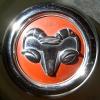-
Posts
6,978 -
Joined
-
Last visited
-
Days Won
74
Content Type
Links Directory
Profiles
Articles
Forums
Downloads
Store
Gallery
Blogs
Events
Everything posted by JBNeal
-

53 Dodge pickup questions from a novice.
JBNeal replied to 53dodgegirl's topic in Mopar Flathead Truck Forum
just my 2¢, but if that 230 is still good, it has a certain WOW factor of its own...I've been stewing for years on what to do with my '48 as the engine isn't original nor is the Fluid Drive hood, and I'm leaning towards mildly hopping up its Plymouth 230 just because I haven't done one of those yet. I've got 4 other trucks that are verified original, so I'm gonna get a little creative with the '48 as it was already deviated from original years before I existed...I drove it for over 10 years and got lots of thumbs up (and a few "super #1s" from impatient commuters), so I figured why not kick things up a notch...several guys have shoehorned a V8 into their Pilot-House engine compartments, so it is possible but has its own challenges, primarily motor mounts and steering gearbox clearance issues, transmission mounts, driveshaft, etc... -

53 Dodge pickup questions from a novice.
JBNeal replied to 53dodgegirl's topic in Mopar Flathead Truck Forum
additional information - Bypass Spin-On Oil Filter -
If a ratchet extension won't fit tightly, then ya might have to find some key stock and whittle down as needed
-
This past week, I had to deal with a squeaky wheel on the single axle flat trailer, as I think I might have repacked them bearings back in 2008 so it was obviously due for service. Picked up new galvanized dust caps as the 22yr old originals were kinda dinged up, and they were such a tight fit that I couldn't even get them caps started in the hub bores by hand. I recall seeing tools to accomplish this task, but I opted to dig thru the scrap metal pile and make something work. I made a similar driver before, but much smaller, out of angle steel by forming over the anvil horn, to engage the flange on opposing sides of the cap...but I lucked out and had a short piece of tubing that was slightly larger ID. This made a driver that engaged the cap flange in an arc about 75°, which was enough to get the cap started in the bore, then work around to square up the sides and drive it home...the best part of all, other than the nice tight fit, was no dents on that shiny cap
-

53 Dodge pickup questions from a novice.
JBNeal replied to 53dodgegirl's topic in Mopar Flathead Truck Forum
From the pictures posted, I'm seeing quite a few modifications to the factory setup: coolant overflow tank, HVAC blower motor on the firewall, PVC components on the crankcase oil fill tube and air cleaner, oil pressure switch on the oil galley port, and a few disconnected wires...the turn signals appear to be period correct aftermarket, sometimes can be found on eBay, etc...them grill parts ya need could also be found from somebody parting out a truck as reproductions are not available... -

53 Dodge pickup questions from a novice.
JBNeal replied to 53dodgegirl's topic in Mopar Flathead Truck Forum
From what I've read and heard from ppl who witnessed these things, repair shops would swap out worn flatheads in a day or 2 with rebuilt engines from local machine shops or from larger operations like Jasper, Sears, Montgomery Ward, Western Auto, etc...unfortunately, there were some differences between car and truck engines, mainly the oilpan sump, which dictated the location of the dipstick...car engines with the rear sump had a dipstick in the block, truck engines with the front sump had the dipstick on the side of the oilpan. Flatheads also had either an external thermostat bypass or an internal bypass...mixing and matching of these configurations doesn't work too well without paying attention to the details...so ya might need to verify casting dates on your block and head as shown in the engine identification link posted to verify what ya have -

53 Dodge pickup questions from a novice.
JBNeal replied to 53dodgegirl's topic in Mopar Flathead Truck Forum
Oil filters were optional back then and could be added at the dealer or from an aftermarket kit at places like Western Auto...but your flathead appears to have the remnants of a car flathead's dipstick tube that has been plugged, so ya might have a Dodge or Plymouth flathead that replaced the original, as the Dodge Truck dipstick was mounted on the side of the oilpan...my '48 has a '55 Plymouth 230 in it, that was something that took access to the internets to figure out because it had the truck oilpan, external bypass thermostat housing, foot-operated starter, etc... -

53 Dodge pickup questions from a novice.
JBNeal replied to 53dodgegirl's topic in Mopar Flathead Truck Forum
additional information - Pilot-House Registry additional information - Pilot-House Help additional information - Pilot-House Serial Numbers additional information - Pilot-House Body Numbers additional information - DPETCA knowledge Do not be surprised if your truck is a frankenstein as some members have found their engines and cabs have been replaced somewhere along the way -
I'd be hesitant to torque on that plug, I have seen damage around the drain from too much torque on a rusty plug then it's a headache to rectify that...if you've already siphoned out all but that last inch or so, then maybe adding fresh gasoline + additives is the way to go to dilute the contaminants and pass them through the carburetor...though for a truck that's been idle for an extended period, I'd prefer to turn that tank upside down to drain and drum on the bottom like Tito Puente to knock any debris loose, then rinse with diesel...
-

What machine work do I need for a rebuild
JBNeal replied to billrigsby's topic in Mopar Flathead Truck Forum
I suggest hot tank the block then magnaflux to check for any cracks before putting any tools to it... -
My memory is a little fuzzy but as I recall, the flywheel is connected to the crankshaft with 4 or 8 bolts + nuts, and the transmission input shaft rides on a bushing through the flywheel into the crankshaft...the crankshaft pulley has the big threaded fastener, either a crankjaw to accommodate hand starting or just a big headed bolt...that crankshaft pulley should have two threaded holes to screw bolts into for a bar puller, not a jawed puller...gotta be careful not to thread those bolts into the timing chain cover or ya might perforate it
-
additional information - Fluid Drive General Dimensions
-
Don't forget about that driveshaft length or the need for that removable frame crossmember...
-
I'm not seeing anything online regarding the Monroe 66818 so I'm not sure if they are even available for purchase...if you look at the specs for the Monroe 66858 and Gabriel 82065, you'll find they are very close to what you have...Gabriel even lists the 82065 as used on the '54...as far as stiffness, these variety of shocks are used on light trucks so you might find them acceptable
-
If you have heavy condensation in the crankcase, then it will start to steam out until it all boils away, and there will probably be blowby mixed in with that steam...there may be some additional blowby prior to reaching operating temperature, which ya might feel if the engine seems to have more power when warmed up...another side benefit albeit minor to a PCV installation is that steam can have a cleansing effect on the spark plugs
-
If the piston rings are not sealing against the bore walls, any wear on the rings or bore can allow exhaust gas from combustion to escape into the crankcase before being forced out through the exhaust valve...the draft tube and filtered crankcase fill cap allow this smoky buildup to escape to atmosphere so that pressure does not build up and blow out the rear main and timing chain cover seals. During normal operation, the draft tube system is supposed to draw out excess gases from blowby or steam forming from condensation in the crankcase but only when the vehicle is in motion; when the vehicle is not moving or moving at low speeds, no vacuum is present at the tip of the draft tube, so those gases escape out thru the filtered crankcase fill cap. But if a PCV system is installed, these excess gases would be drawn into the charge air system at all times, burning off hydrocarbons and keeping the smelly cloud from forming in the engine compartment... additional information - grey beard's PCV installation and modifications
-
Age is one of the reasons I brought this back up...when my Monroe shocks got about 7-8 yrs old, they started to leak, handling became an issue on lumpy roads, and nose dive was more pronounced on braking especially downgrade. I recently replaced 5 yr old Monroe shocks on the QuadCab as opposite corners started to leak; replacement on all 4 corners substantially improved ride quality and braking with that Cummins had much less nose dive. Shock absorber performance degradation is so subtle that drivers don't know what they're missing until they upgrade to fresh components
-
I would advise against notching the frame to accommodate your brake lines...if anything, make your brake lines fit inside the frame however possible, especially if you've already deviated from the factory setup...
-
It was my understanding that from a physics standpoint, electrons flowed more readily from negative to positive poles, so that's why early automotive systems were positive grounded...eventually it was observed that copper conductors deteriorated from electrolysis when charged with negative voltage, so systems were negative grounded to apply positive voltage to the conductors, which helped protect the copper...
-
Just to clarify the different applications: additional information - shock absorber replacement
-
Just to clarify the different applications: additional information - shock absorber replacement
-

Found the elusive Napa shock Part #'s
JBNeal replied to nj viking's topic in Mopar Flathead Truck Forum
Looks like the '54 uses the same shocks as the '51-'53... additional information - shock absorber replacement -
Brake fade is a consequence of heat not shedding fast enough from the contact surfaces...fins were added to brake drums to increase surface area for cooling, but ultimately the ventilated disc can shed heat faster than any drum, reducing stopping distance substantially and consistently...there are a plethora of online articles and videos that go into some detail about this comparison...but effectively as vehicles have gotten faster and larger, more braking force is needed and more often in stop'n'go traffic, so ya need to keep them brakes cool to keep braking distances down...if we all drove 2500# vehicles that rarely exceeded 45mph, then drum brakes would probably be adequate
-
In 2004, I removed the ratty carpet out of my '92 Ram 250 and replaced it with one of these molded rubber floor covers and I liked it, though installing sound insulation beforehand would be a good approach. The trick is to lay the rubber out in the sun for an hour or so, makes the rubber very flexible to test fit in the cab and trim excess as required...trim only a little at a time, do many test fits, and you'll be able to get it just right without botching the product...sold the truck 2+ years later, and the ol' farmer who bought it liked the rubber floor covering and thought it was factory installed til I told him otherwise
-
additional information - rubber floor cover



